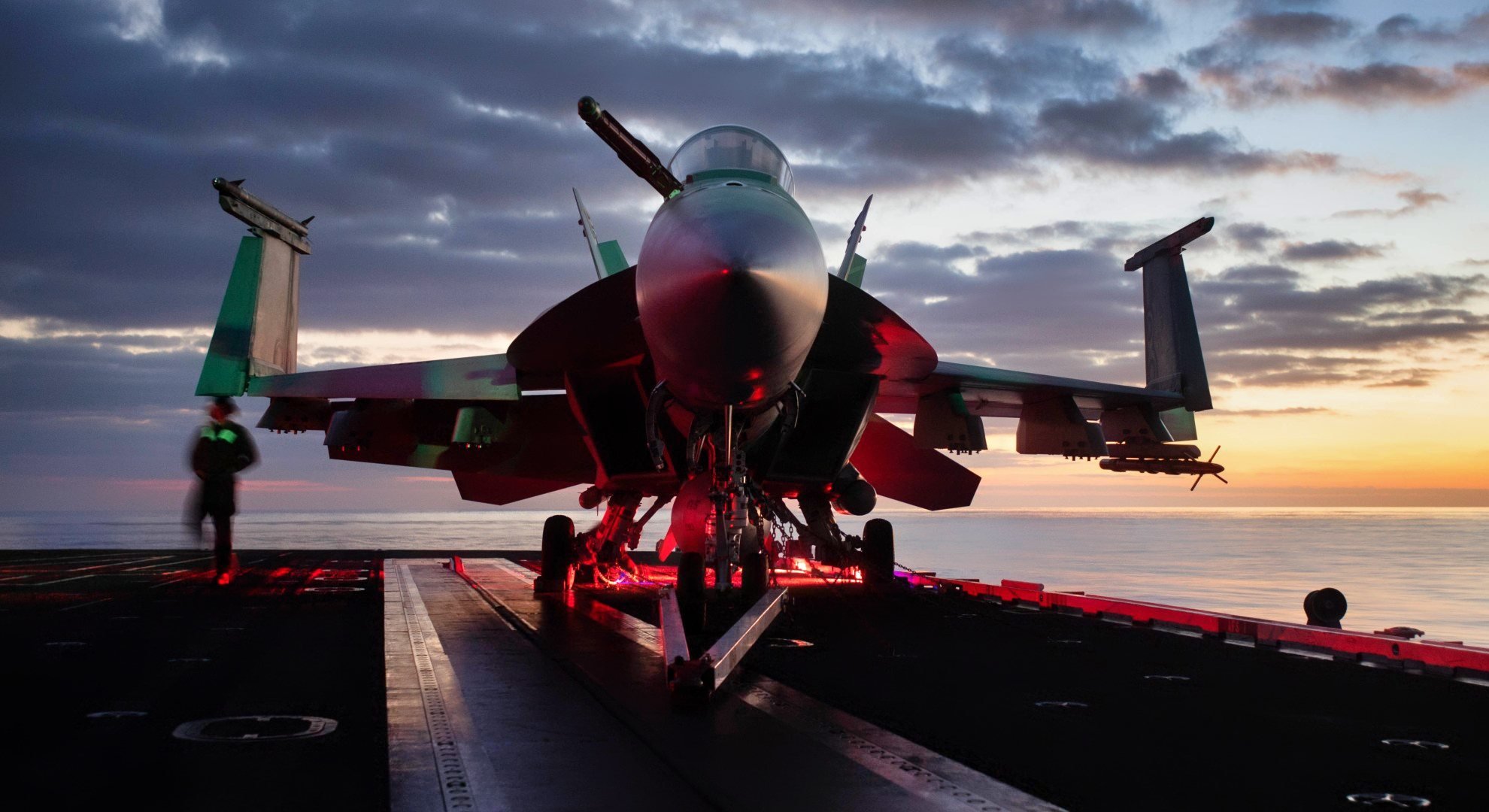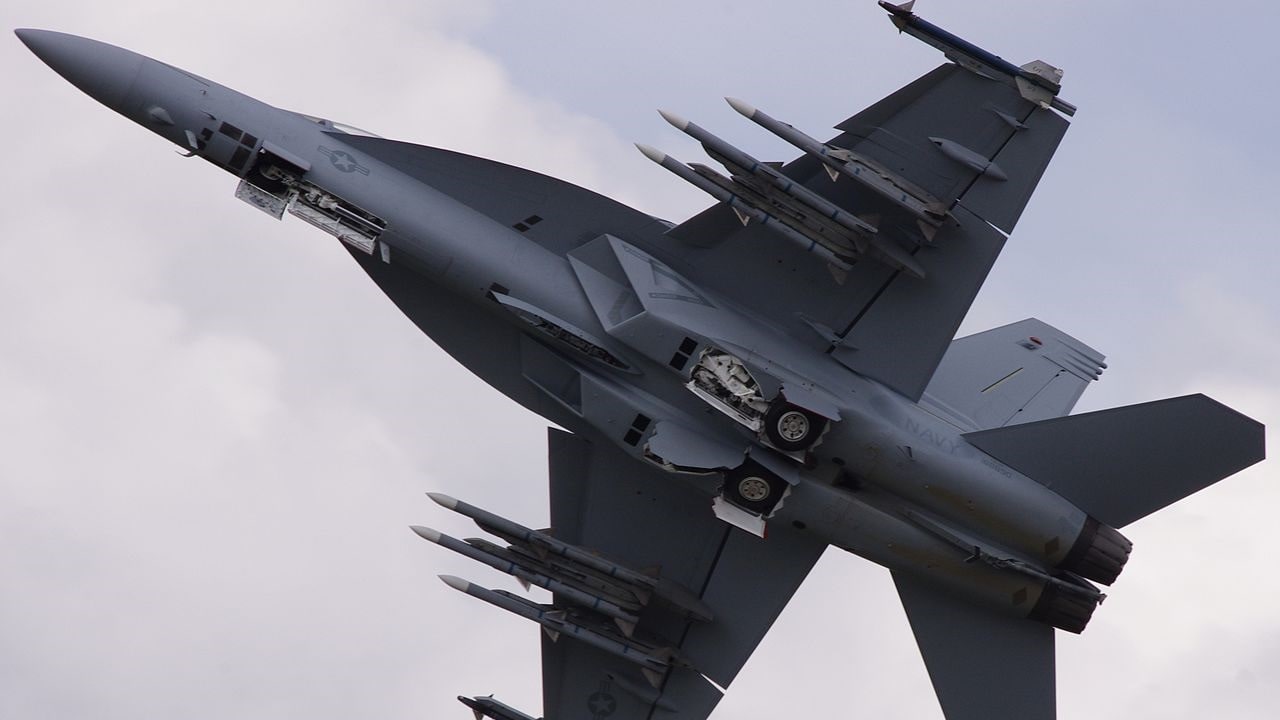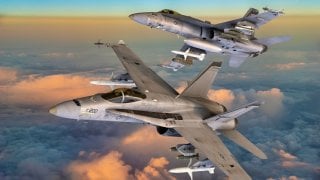F/A-18E & F Fighter Puts the “Super” In “Super Hornet”
The Boeing F/A-18E/F Super Hornet is an upgraded, larger, and more capable variant of the original F/A-18 Hornet, featuring advanced thrust-vectoring engines, improved maneuverability, and increased fuel capacity.
Summary and Key Points: The Boeing F/A-18E/F Super Hornet is an upgraded, larger, and more capable variant of the original F/A-18 Hornet, featuring advanced thrust-vectoring engines, improved maneuverability, and increased fuel capacity.

-Although slightly slower than its predecessors, the Super Hornet excels in carrier operations and incorporates technology initially developed for fifth-generation aircraft like the F-35 and F-22.
-Despite the arrival of the F-35, the U.S. Navy will continue to operate the Super Hornet until at least the 2030s.
F/A-18 Super Hornet: The U.S. Navy’s Reliable Powerhouse
A redesigned variant of the F/A-18C and D Hornet, Boeing F/A-18E, and F/A-18F are larger and more capable than its predecessor. It is a carrier-capable fighter that is powered by a General Electric (GE) F414-GE-400 twin-engine and can travel at supersonic speeds. This engine produces 13,000 pounds of force (lbf) of dry thrust and 22,000 lbf of thrust when its afterburners are engaged.
And this bird has greater thrust than its predecessors.
The United States Navy is the main user of this variant. It was introduced to the fleet in 2000. America’s Navy says the Super Hornet will continue to operate at least until the 2030s when the F-35 Lightning II will replace it.
F/A-18 Variants: Differences with Its Predecessors
Designers of the Super Hornet stretched out its airframe to make the warplane longer than the original variants. The Super Hornet’s wing area was increased by a whopping twenty-five percent, too.
Thus, this warbird is twenty percent larger than the original Hornet (hence, the term “Super” Hornet).
With larger wings and larger capacity, this bad bird can carry more weapons and pods. More weapons mean greater staying power whilst in combat. Overall, this means increased lethality.
That’s a win for the Navy.
To improve airlift and enhance the bird’s stealthiness, Boeing replaced the original Hornet’s oval air intakes with rectangular air intakes. Boeing made further tweaks to the original design to make the Super Hornet more maneuverable than its predecessors.
In terms of fuel, this warbird carries thirty-three percent more internal fuel which, according to Simple Flying, increases “its range by forty-one percent and endurance by fifty percent. As a result, it is also significantly heavier.” For instance, the Basic Empty Weight (BEW) and Maximum Takeoff Weight (MTOW) are 7,000 pounds and 15,000 pounds higher than the legacy model.
Mentioned earlier was the fact that the F/A-18 Super Hornet has greater thrust than its Hornet predecessors. Yet, it should be noted here that greater thrust does not equal faster speeds. Indeed, the Super Hornet has a maximum speed of Mach 1.60, or about 1,227 miles per hour whereas the original Hornet can reach Mach 1.80, or 1,381 miles per hour. That might seem like a distinction without a difference, but the facts don’t lie.

The Super Hornet is slower than its predecessors.
Interestingly, many pilots who have flown both the original Hornets and the Super Hornet swear by the Super Hornet, even though it is around twenty knots slower than the original bird. The reason that the bird is slightly slower than the original has to do with the expansion of the size of the wings and the fact that the Super Hornet carries more into battle.
Still, Mach 1.60 is nothing to shrug about.
To clarify any possible confusion, the reason that the Super Hornet has greater thrust is because of the need to take off from carriers. Carriers have a very limited flight deck, so being able to go from zero to takeoff speeds in short order is a key element for any bird operating on an aircraft carrier. The slower speed also helps with landing a plane on a moving flight deck. Carrier landings are notoriously difficult, even for the best-trained pilots.
In other words, the Super Hornet is a comprehensively great upgrade to the original Hornets, despite the relatively slower speed.
Other Tidbits on Super Hornet
Interestingly, the Super Hornets had impressive technologies incorporated into them that had originally been designed for the F-35 and the F-22A Raptor. So, while these birds are still nowhere near as sophisticated as the fifth-generation warplanes mentioned above, including capabilities originally only found on those fifth-generation warplanes, has made the Super Hornet, a fourth-generation bird, a highly capable platform—especially when compared to the enemy aircraft that Super Hornets might encounter in combat.
Here again is proof that the Super Hornets are probably the best naval air superiority fighter to date. While the Navy has taken delivery of multiple F-35 carrier variants, the fleet has not yet transitioned to these birds being their primary warplane. Their efficacy in combat compared to their older Super Hornet cousins remains to be seen.
With the fleet opting to operate the Super Hornet throughout the 2030s, one can foresee that the Super Hornet will continue impressing all the way until the Navy finally decides to retire these beasts.
Author Experience and Expertise: Brandon J. Weichert
Brandon J. Weichert, a National Interest national security analyst, is a former Congressional staffer and geopolitical analyst who is a contributor at The Washington Times, the Asia Times, and The-Pipeline. He is the author of Winning Space: How America Remains a Superpower, Biohacked: China’s Race to Control Life, and The Shadow War: Iran’s Quest for Supremacy. His next book, A Disaster of Our Own Making: How the West Lost Ukraine, is due October 22 from Encounter Books. Weichert can be followed via Twitter @WeTheBrandon.
All images are Creative Commons or Shutterstock. All photos are of various submarine styles.
From the Vault
Russia Freaked Out: Why the U.S. Navy 'Unretired' the Iowa-Class Battleships
Battleship vs. Battlecruiser: Iowa-Class vs. Russia's Kirov-Class (Who Wins?)
Image Credit: Creative Commons and/or Shutterstock.


